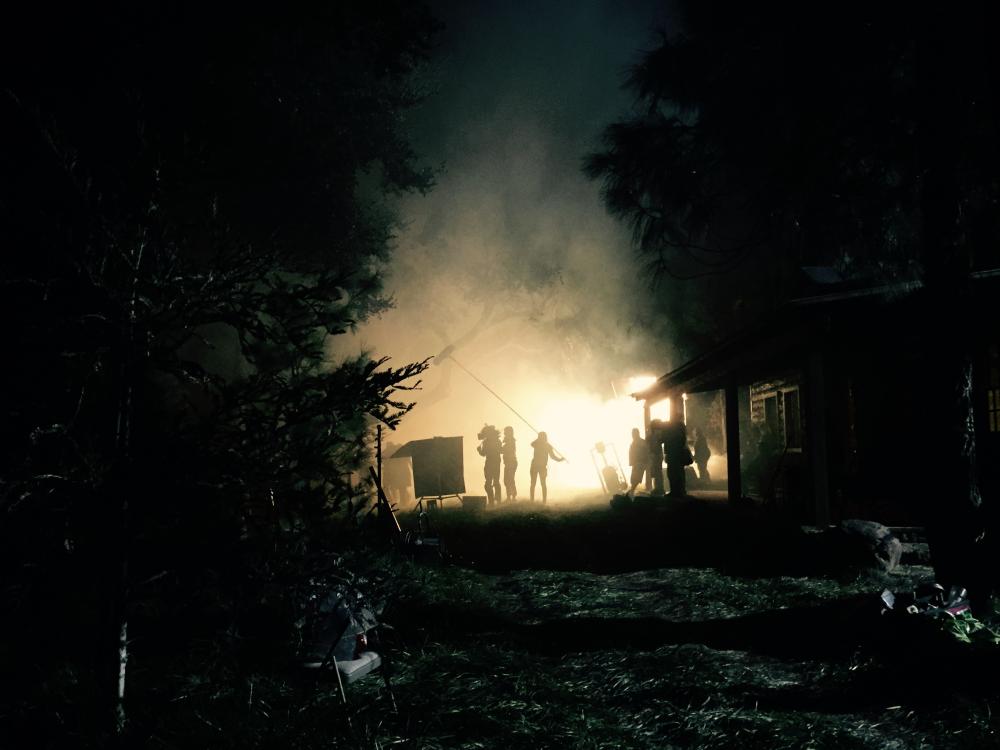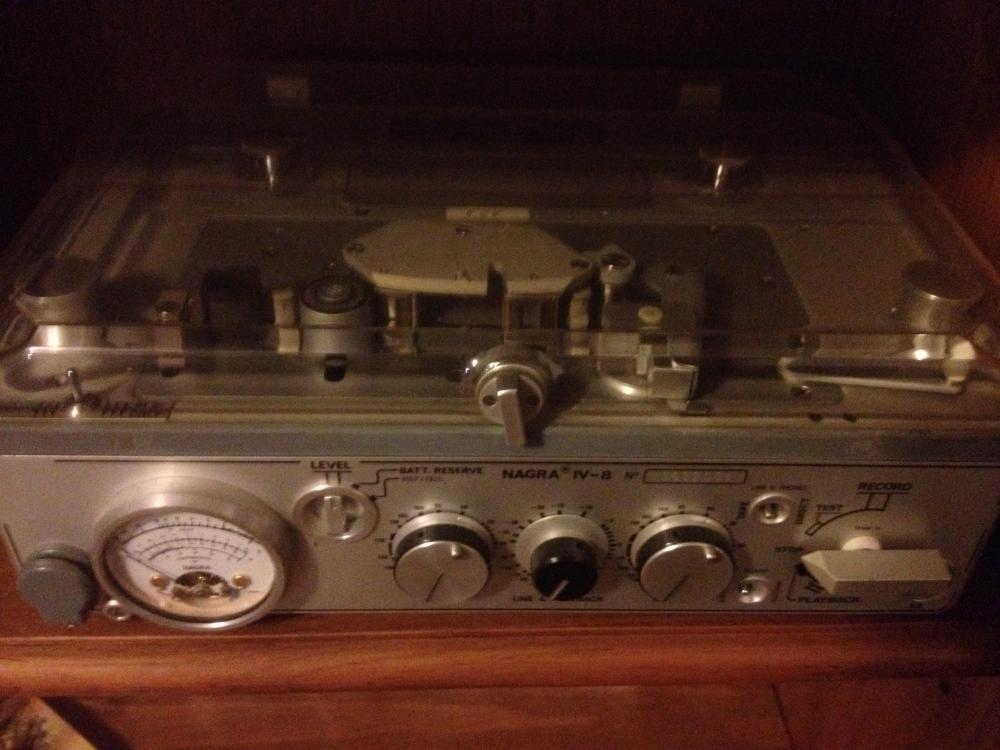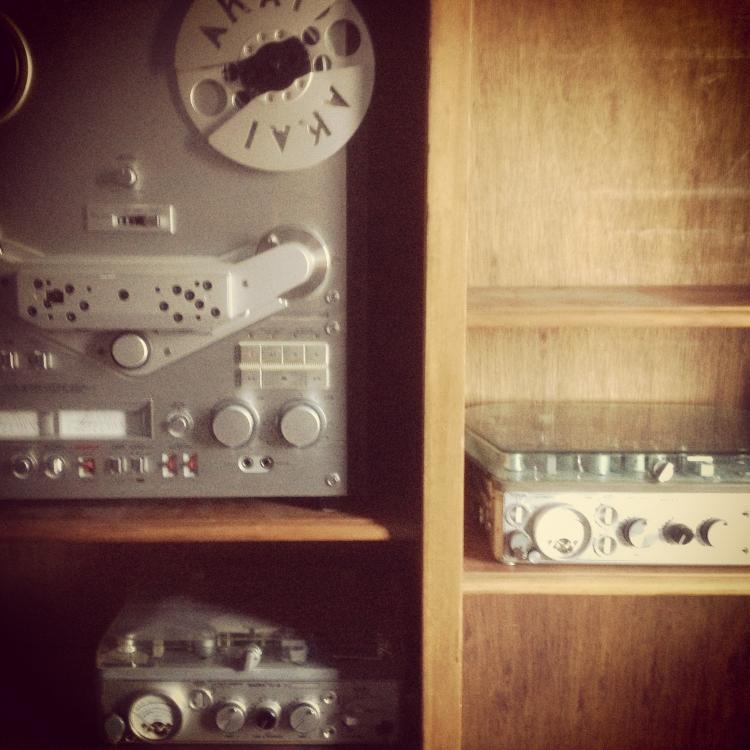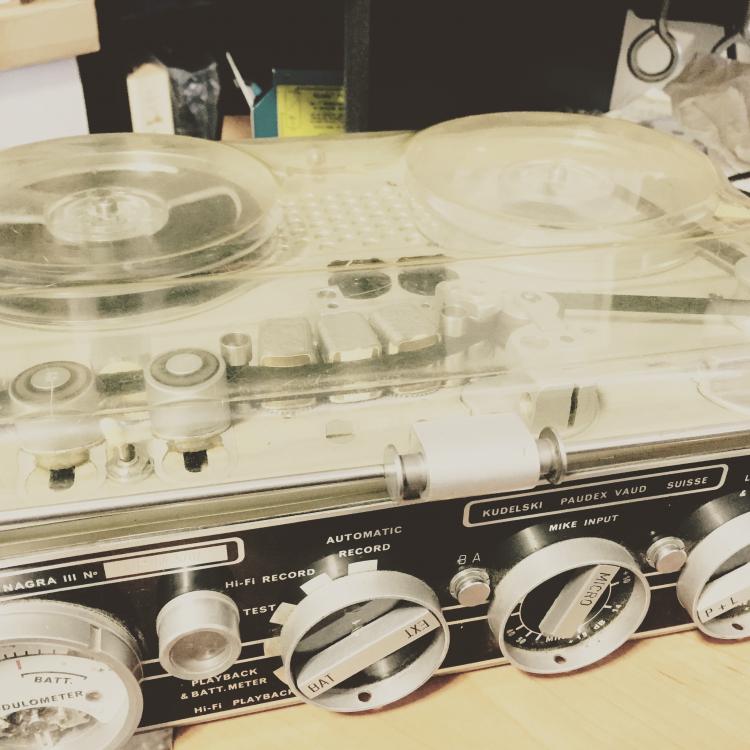-
Posts
1,711 -
Joined
-
Last visited
-
Days Won
35
Content Type
Forums
Gallery
Store
Everything posted by JonG
-
Think Cantar will try to jump on board with this? I must admit, now I may get a 688... But still waiting to see if they'll make a higher end 7esque series machine...
-
My two cents is this: Young people coming into this field of work often have no clue what the rates are, and often don't even know that they should be charging for labor, equipment, expendables, etc. they just see a number in a job posting, and recognize that it is often a better number than what they were making at McDonals or Starbucks, so they go for it, even though it is grossly under what the "going rate" may be. When I was starting out, there was very little community in the production sound world, other than this and the ramps forum. But the older generation for the most part would have nothing to do with the young guys, and so the young guys, with no guidance or direction, had to make up their own rules. We did not know about the idea of charging a sort of "going rate" for a service. We had this notion of charging less because we were newbies and didn't have those sorts of clients, even though many of us did have professional kits. Had we known what we know today, there certainly would be a lot fewer producers conditioned to believe that they can get decent sound for anlow rate from a young guy coming up. Luckily we have a more open community now, and people are willing to discuss things like rates and negotiations, so the indie world is seeing better rates in my region than it was seeing when I was starting out. But those years of the young guys making up their own rules (and rates) damaged the rates for everyone because it taught a lot of producers that they can get sound for a lot less, and subsequently, a lot of the older guys ended up being forced into retirement, or taking lower rates, because they weren't open to mentoring younger people in any sort of way in the first place. So imho this is an important topic that should be discussed openly, and with the given factors stated by others above. How it is executed is certainly open for debate, but the subject is just as important as anything else being discussed on the forum, and sharing knowledge is ultimately only going to benifit anyone here that is serious about pursuing sound as a career.
-
I can't comment on how long they've been around, but the position is similar to a frequency coordinator at a venue, except a lot more involved because it can include elaborate installations for complicated scenes. I know Gary personally, and he is by all means an RF Guru, and is often called upon for these sorts of jobs on film and TV sets, as well as a variety of other scenarios.
-
Betso tc display
-

Blocking video with added horrible advice
JonG replied to Prahlad Strickland's topic in General Discussion
Wow. No wonder I'm met with such hostility on some jobs. If this is the kind of advice they're getting, then amateur "filler" content is what they'll continue to produce. -
I think it would also be kinda cool to have our future 7816 with a MonoMix In which would route to a mix track, or work as a return in. That way, those of us using analog boards can record our mix tracks without sacrificing an input.
-
For the love of god, please let Sound Devices be releasing a higher track count machine that is equal to or greater than the quality of a 788, that is not in the 6 or 9 series. No baby steps either, lets have at least 16 inputs!
-
As long as the pins/rings on the connectors line up, it should be fine.
-
I try to get clean tracks for post whenever possible. It is easy to lay in a music track later, but working around it will be time consuming. Of course if production is being difficult about allowing me to do my job correctly, I'll roll with it, put it in my notes, and do my best to create usable mix. Having been on the post side of this question, where creating the M&E stems for foreign distribution was my job, I can safely say that when this sort of thing came up, I was annoyed, and made sure to let production know that these sorts of decisions end up costing the film in time and performance (ADR), and it is best to do it the correct way the first time. If they are unsure what that is, they need to consult the PSM.
-
We have luckily been able to keep 24 bit 48 kHz recording a standard, which has prolonged the lifespan of our equipment, and not rendered it obsolete like the "resolution wars" that the camera companies are having. But I am curious how long that will last. A friend of mine and I, both hifi enthusiasts, found common ground with vinyl records. Then, an off handed comment on my part brought us to quarter inch tape being our medium of choice. Now we are venturing into DSD, because frankly, we don't want to wear out our tapes, lol. This got me thinking: what if DSD recording became the norm for us? A recent chat with our resident Tascam representative yielded the fact that all or most AD converters start with a DSD encoder, but the data is then processed into a wav file after that point. I could have my facts wrong here, so please step in and correct me if you know more about this. But my thought is this: if we are to supply the highest quality raw recordings that we can, would it make sense to supply something of higher quality than what the end format would be? Food for thought. I am interested in your opinions!
-
-
I've got a special appreciation for Nagras and reel to reel machines. I have a small collection of albums on reel to reel as a hifi enthusiast, and use Nagras for transfers and occasionally field recording, and they remain proudly on display in my home and office, wired and ready for transfers into Pro-Tools. At this point I only have three: a Nagra III, IV-B, and IV-L. I'd love to have an STC, or any other model really, but the more popular stereo and 4.2 series models tend to be more expensive, and thus far I have managed to accumulate my little collection at very little cost (mostly out of luck), though each of my machines have issues, and non work 100%. But for the sake of the title of the thread (and not to derail the ongoing conversation here), here are some photos: Nagra IV-B (very stripped down single speed machine) Akai GX-646, Nagra IV-L, and Nagra IV-B Nagra IV-L transferring into Pro-Tools via UAD Apollo Quad Nagra III Nagra IV-L on a Wilcox Skyline cart with Sound Devices 633 for comparison. Two Technics 1506 machines, Akai GX-646, and Nagra IV-B. Some major dubbing was going on that day!
-
Funny. I had my boom op do the same thing with a 70 not that long ago!
-
I regularly use an 815T and mkh70. I think they sound great, and are an amazing tool to have in the arsenal. Wireless are often not the right tool for the job, but a regular shotgun might not have the reach needed. I will use a long shotgun in countless situations where lavs just arent the right tool for the job. Like Phil mentioned: noisy locations (think beaches, crowds, etc.), wide shots, bad RF environments, scenarios where wardrobe is not too lav friendly, etc. I had a scene last year where two characters had a long conversation while swimming around in a pool. The mkh70 was the perfect tool for the job. Post loved the sound, no ADR was needed. Another job with my 815T where people were talking at the beach in a wide shot. The director thought that they were listening to an all lav mix. I told them it was just the boom mic. They were blown away. Again, no ADR needed. I could have put lavs on those characters, but it was also very windy, and it would have been difficult to get anything very clear out of them with a lav. Why over complicate things? Lol I had a job where two basketball players were having a conversation while shooting hoops. The basketball jerseys, sweat, and physical movement made lavs a nightmare to deal with. But the trusty mkh70 made the entire conversation completely intelligible, as well as picked up the sounds of their actions, which made for a great sounding segment. Everyone was happy with the outcome, and the atheletes were thankful to not have to wear lavs and waist straps! The only drawback to any of these mics is their size and weight. Yes you have to have a strong boom op that has some skill. My boom ops know that I regularly use these mics, so they have to be up to the challenge. I hear a lot of mixers say that they can't get their boom ops to swing an 816, which boggles my mind because even though it is a challenge, it's part of the job imho. I'm not afraid to swing one, and regularly do, even as an OMB. So my point is that I think everyone should have at least one long shotgun, you'd be surprised how often you'll find it to be the right tool for the job instead of a lav!
-
I wouldn't convert this back. It's a great piece with some amazing mods done to it. I'd love to own one like that! It'll cost you less to just buy a standard 4.2 anyway.
-
I'm waiting for something of 788 quality to come along too. After using a 6 series machine on a cart, I was not happy with it. If SD doesnt come up with something really good I'll probably switch to the Cantar X3.
-
What does it sound like?
-
Yes that is the converter. Sorry you just wasted your money. Just got a Decimator2, but need a project to use it on to know for sure if it will work. My end goal is to get a signal to my cart monitors, not a tablet. I want to stay away from wifi frequencies because frankly, I can't tell you how many times I see the camera and DIT people scratching their heads about why things arent working when they've got a number of things all competing for the same spectrum. The fact that my Zaxcom ERXs run on 2.4 gHz is infinitely disappointing to me, and the source of plenty of problems, re my statement above. In any case, I will report back with my findings once I've had a chance to play around with everything.
-
Yes I only know the old Rode blimp. I can't comment on the newer one. Dave Fisk graciously showed me the K-Tek blimp when it was in development back at their shop a few years ago. I thought that some of the design elements were well thought out, but hélas I have no practical experience with them. I do have a Reinhardt SoftZep II that I inherited from a mixer that passed away. Aside from handling noise issues, it works amazingly well in ultra high wind scenarios, and is incredibly light. I modded the mount to help with the handling noise, but it is still not perfect. Must only be used by very experienced Boom Ops imho. Either way, worth checking out. That said, my day to day blimp is Rycote.
- 20 replies
-
- blimp
- wind shield
-
(and 1 more)
Tagged with:
-

Music Videos: still a part of our biz or?
JonG replied to Philip Perkins's topic in The Daily Journal
I see a lot of low budget music videos just playing the song from a phone into a PA system or even a stereo. They just roll endless amounts of footage over and over, syncing with plural-eyes, or free-style editing. I even worked on a Billy Ray Cyrus video on the BTS crew that literally just played the song on a loop from a car stereo (we were shooting in the desert, but still!) onto 5D cameras. That said, I do playback here and there using Pro-Tools and a smart slate for a good rate. Never turn those gigs down. I've been lucky on those jobs because the pay has been good and the days have been limited to 12h days. But I have heard stories of 72h runs. -
In the studio world the saying is "buy once, buy for life" meaning spend the money on the best product instead of making baby steps with your purchases. This however sometimes difficult to do. I purchased a Rode blimp years ago and was never sayisfied with it, both in performance and weight. Today I use a Rycote. They work and they work well. I recommend doing some research on your part first (for everything!), then coming to a decision on your own before spending any money.
- 20 replies
-
- blimp
- wind shield
-
(and 1 more)
Tagged with:
-
Thanks Gordon for the clarification. I inderstood that it was a matter of physical dimensions from reading some of your previous posts. Hopefully this explanation will tide people over until there are further developments, in technology or in updates on your end. The ability to work at 250mW has saved my behind on many occasions. One show I did could not have happened had I not been using SMQVs specifically, because of the power variability, form factor, and the dual AA batteries. So it is unfortunate that this technology can't be used in a wideband setting with high output power. Another reason to hang onto the old SMQVs, and not exchange them for newer ones. However, given those limitations, I still think that I'd spring for a handful of 100mW wideband SMQVs to work alongside the older ones if that's the best we can do, and I'm sure others will agree with me on that.

.png.279748a58a2b862b7aa5f3b84126e232.png)







